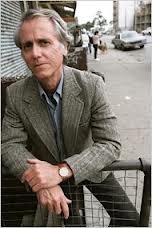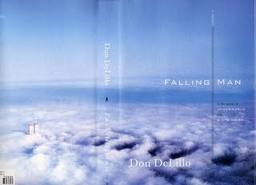Not everybody gets Don DeLillo. If you don’t pay attention to the contemporary art of the novel, you may not have even heard of him. Presto! That’s why I’m here today! Mr. D. is in the pantheon of current American fiction writers. Literary fiction, that is – this is not a “page-turner”, and he’s no Dan Brown. (That would be like comparing Vincent Van Gogh to the guy who makes the blue outlines for the old “paint by numbers” craft sets.) And I’m no DeLillo expert: of his major, and often hefty, acclaimed novels – White Noise, Mao II, and the famous Underworld – I have read precisely none. I tiptoed into his work with a comparatively slender novel called The Body Artist. It was clever, admirable stuff, a bit morose, and I don’t remember much about it. It left me cold, or maybe I was there to begin with. I may, however, need to read it again.
My recent second voyage into DeLillo Country was his 2007 novel Falling Man, the post-9-11 book he hadn’t intended to write. I found it on a remainder shelf in a mega-bookstore back home in Canada, next to a non-fiction book by Martin Amis in the same historical vein: The Second Plane. I was trawling for all-things-I-can’t-get-in-China, and not only were these two volumes a few cultural steps higher than the Harvey’s burgers and Baskin-Robbins cones I’d been gorging myself on last July, they also seemed fated together to increase my lugging for the next month’s return trip to China. And here’s why The Body Artist might deserve a second look: Falling Man is a novel I’ll be thinking about for a long time, one that I immediately started re-reading once I’d finished. How did he do that? It’s brilliant, but also an accessible introduction to a challenging writer.
We later find that one of the central characters is Keith Neudecker, a thirty-something lawyer and lover of games. We first meet him, though, as he staggers down a New York street. The novel opens like this:


